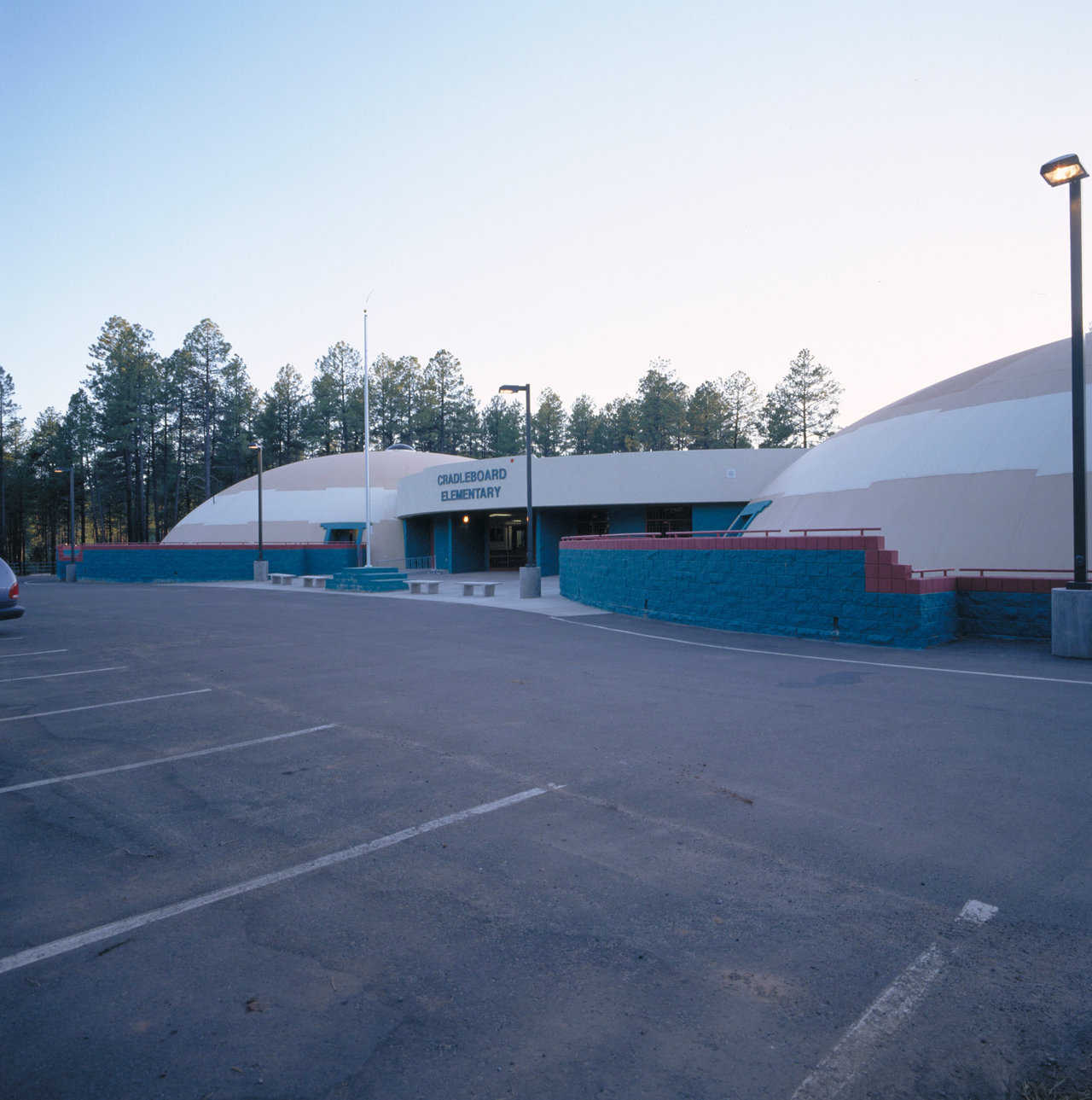$322 billion!
That, says the National Education Association in its Statistical Analysis Report of June 2000 is the staggering amount it will take to fix America’s schools. Of that $322 billion, about $54 billion should be allocated for educational technology. But the remaining $268 billion is needed to repair, renovate or add to existing school facilities.
The NEA used data from 903 public schools surveyed by the National Center for Education Statistics (NCES), a federal entity that reports on education here and in other countries. The NCES questionnaire asked the schools for their assessment of “nine different building features: roofs; framing, floors, and foundations; exterior walls, finishes, windows, and doors; interior finishes and trim; plumbing; heating, ventilation and air conditioning; electric power; electrical lighting.” Half of the schools said that at least one of the nine building features was in less than adequate condition and three-quarters said that more than one building feature was less than adequate.
Based on this and similar reports, the NEA concludes: Too many of America’s schools are crumbling, crowded and obsolete. It’s a national problem requiring a national solution.
Because of this report and conclusion, MDI decided to conduct its own survey of established, operating Monolithic Dome schools. We successfully contacted and questioned the following:
Emmett High School
In the small, rural community of Emmett, Idaho, Emmett High was the first Monolithic Dome school built. Its class of 1988 was first to graduate within the sparkling, curved walls of their new gymnasium, a 180-foot diameter Monolithic Dome with 3000 seats for sports activities and a 350-seat theater. The diplomas received by these graduates and those who followed were proudly stamped with dome impressions.
In addition to the gym, Emmett built a second, 180-foot diameter dome for classrooms and three smaller domes for woodworking, metal and auto shops. According to now retired vice principal Tony Villanueva, severe overcrowding of the school’s 900 students, many of whom traveled 40 miles one way, necessitated this expansion. He gave two reasons for Emmet’s decision to go with the then-unproven Monolithic Domes: they offered a reasonably priced, authentically unique alternative to so-called stick frame buildings; dome design promised savings in ongoing maintenance and energy costs.
After ten years of use, both Villanueva and Ron Noble, assistant superintendent of schools, had no regrets about their decision to go Monolithic. In an interview published in our Roundup, Summer 1997, Villanueva said the domes were quieter compared to other buildings in their district. He noted the dome’s unique look. “You come in and see the foyer, and it really looks like you’re entering a mall. Most of the people who visit here have really been impressed with the domes,” he said. Villanueva also commented on the dome’s pie-shaped classroom arrangement. He said, “We got more space out of the building than we thought we were going to have. It’s not crowded at all. It has proven very functional in that way.”
Noble, on the other hand, gave us an energy cost comparison between Emmett High School and Sweet/Montour Elementary, another school facility in their district. He said that during the 1995/96 school year, Sweet/Montour spent $9,000 on energy while Emmett spent $10,100. But the elementary school encompassed only 27,000 square feet and 62 students while Emmett High had 110,000 square feet and 900 students! That meant that energy consumption at the much smaller Sweet/Montour cost 33.3 cents per square foot and only 9.2 cents at the much larger Emmett High.
Now, after 12 years of operation and some changes in school administration, Emmett’s Principal Duane Horning said, “Our energy bills per month average about a third of what our middle school with the same square footage spends. We have four seasons, so depending on the weather we average about a $1000 per month. We have no air conditioning. (Idaho schools usually don’t.) And we don’t have to heat very much, even in coldest times. We usually get about three or four weeks of below freezing temperatures at a stretch. But even then, if you take the chill out in the morning and put 900 students in here, they can heat the building.”
As for ongoing maintenance, Horning’s only concern was about the Airforms which he mistakenly thought might have to be replaced somewhere down the line. Because of that concern, David South, Jr. visited Emmett High, and, after examining the Airforms, assured Horning that periodic painting of the Airforms would eliminate any need for replacement.
Asked about reaction to and acceptance of the domes, Horning said, “I think domes have a group of people that no matter how nice you build them, they wouldn’t like them. We still have some of that here. But our students and most of our teachers get along just fine.”
Carla Murdock was one of those students. As a 1989 graduate, Murdock was in the first class that attended school in the domes for a full year. She said, "Like a lot of the alumni, I remember when they passed the school bond and the construction started. For a very conservative community like Emmett, the domes were really fun and outrageous. We had tours from other communities, and when the teams from other schools visited they would always ask what it was like to go to school there. They thought it was really neat.
“And we just loved it,” Murdock continued. “We had a beautiful atrium that everyone wanted to hang out in all the time. I remember that it was hard to keep a lot of us in class. It was exciting.”
Horning said that the community likes using the domes for dinners, evening classes, and recreation, and that they have been officially designated as Community Disaster Shelters. “A while back, the Red Cross placed 50 people here overnight because of a flood threat. They appreciated being safe in a dome,” Horning concluded.
Heber/Overgaard
It’s a unique school district formed by two towns in Arizona, that opened its Monolithic Dome facility in 1998. That facility consists of two domes with a connector. The larger of the two encompasses classrooms and offices within its 160-foot diameter, while an 80-foot-diameter dome holds an auditorium, cafeteria and kitchen.
Superintendent Ron Squire said that the two neighboring towns, located near the Fort Apache Native American Reservation, opted for Monolithic Domes because of reasonable construction and lower, long term operational costs.
Asked how things were going, Squire said, “They’re going very well.”
But Squire’s comments on the facility’s energy use were far longer and much more complicated. He said, “Our energy use, that’s a hard one, and let me tell you why. Our first winter in the domes was very, very mild so we didn’t notice anything wrong with the heating system.”
“But last winter,” Squire continued, “while it was mild for the most part, we did have a lengthy stretch of cold weather, not wet weather, just cold. That’s when we found we had difficulties with our heat pumps.”
Apparently when the pumps were installed by the heating contractor, some were done correctly. "Others," Squire said, "were fixed so that the outside air would not shut off. It got to ten below zero and the heaters could only get it warmed to about zero, so we were freezing.
“We called the heating contractor and they were great. They sent people out here immediately. When we finally shut that air off so the pumps were recirculating the inside air, rather than bringing in that vast amount of cold air directly into the building, then immediately our building was warm again, and the heaters began running very minimally. So it was simply a matter of getting things squared away,” Squire said.
Unlike the heating, Heber/Overgaard’s air conditioning has operated very satisfactorily and only minimally from the beginning.
Asked about maintenance, Squire said, “Very few problems. We had some leaks originally around penetrations for ducts, but we got those sealed and haven’t had a problem since.” He then added, “I would caution people about the heat pump arrangement. In snow areas, if they install heat pumps outside, they should put a barrier over them to keep snow from going on top of those heat pumps and preventing the fans from turning. We’re now planning to add such barriers.”
Squire said that Heber/Overgaard gets “quite a few visitors” curious about and interested in the domes. “Many right in this community still don’t know and understand a lot about the domes. Those who have been here and come inside are very pleased. But there’s still those who just look at the outside and think: What kind of an outfit is that? How come they did that?”
Squire recounted one story of a local citizen who reacted that way when he first saw the domes. “But when he was told that we got our domes for about $68 per square foot when a conventional structure would have cost us $98 or more, the man responded, ‘Oh, that building is looking better all the time.’ And that was before he went in,” Squire said.
Cradleboard Elementary
It’s in Whiteriver, Arizona on an Apache Reservation, at 7000 feet in Arizona’s high country. The community completed its facility of three Monolithic Domes with an interconnecting central corridor in 1998. This 34,000-square-foot facility has a multipurpose dome with a cafeteria, gymnasium, and an arts area. It’s flanked by two domes with classrooms for 300 students and 13 teachers in kindergarten through grade five.
Before deciding on Monolithic Domes, John Clark, the then-superintendent of schools, did construction cost comparisons. Clark’s findings were presented in our Roundup, Winter 98/99. He said that their construction cost averaged $29 per square foot, while the completed cost averaged just $79 per square foot. Clark estimated their savings between $250,000 and $500,000.
Two years later, Barbara Nolan, Cradleboard’s principal, who was there during the domes’ construction and serves there now, said, “We love our design. We truly do. We just have some little glitches we have to iron out.”
One of those glitches occurs after heavy thunderstorms. Nolan said, “We get leaks. Not from the skylight in the middle, but from the ventilation pipes. Our maintenance crew is currently working on them.”
Another glitch has already been partially solved. “Acoustics in the multipurpose dome were a problem. But it’s fine now. We sprayed with acoustical foam,” Nolan said. “We plan to do the same in the classrooms because teachers’ voices just get lost. They go up into the high ceiling and don’t bounce back down.”
Although she has not done a cost comparison, according to Nolan heating and cooling at Cradleboard has been “very economical. Overall we’re real happy with how the school is set up,” she said.
Rock Port
Rock Port, Missouri, a community of 1500 people located eight miles from the Missouri River, in 1997 completed a Technology Center used by 423 students and 45 teachers. This Monolithic Dome’s one floor of 14,500 square feet includes seven labs, classrooms and a library. Its cost, including all enhancements, averaged $62 per square foot.
The first winter in the new Tech Center convinced everyone of the dome’s energy efficiency. In an interview published in our Roundup, Winter 1998, Gary Arthaud, then-superintendent, told about a stretch of 15-degree weather Rock Port experienced in November 1997. Arthaud said that the furnace failed in their old building, to which the dome was connected for heat. “We thought we were going to have to shut down because the old building was freezing, but not the dome. This cold spell showed us just how energy-efficient this new building is,” he said.
Richard Baldwin, Rock Port’s superintendent since July 1999, updated us on the Tech Center’s progress. He said, "Well, generally speaking things are going pretty good. We did have some problems with the fresh air return and having a cold feel to everything, but all we did was raise the temperature about three degrees in the winter.
“I go on the assumption that the dome is living up to its expectations. We’re not using excessive amounts of energy and overall we are very satisfied,” Baldwin concluded.
Note: This article was originally printed in our Winter, 2000 Roundup.
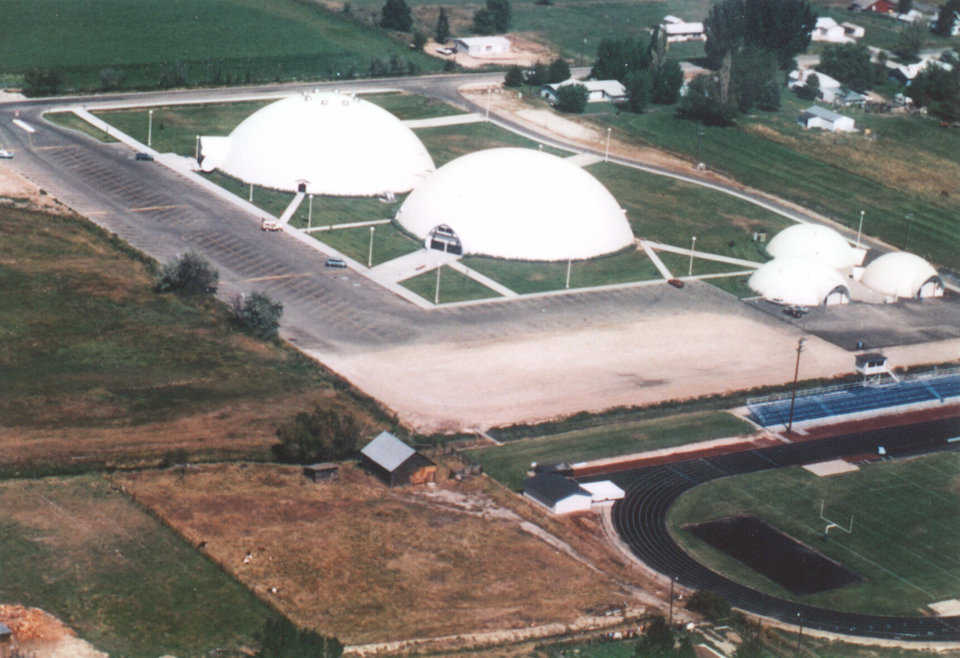
Emmett High School in Emmett, Idaho built a five-dome complex. Two 180-foot domes house the classrooms and a gymnasium while the smaller domes are used for vocational classes.
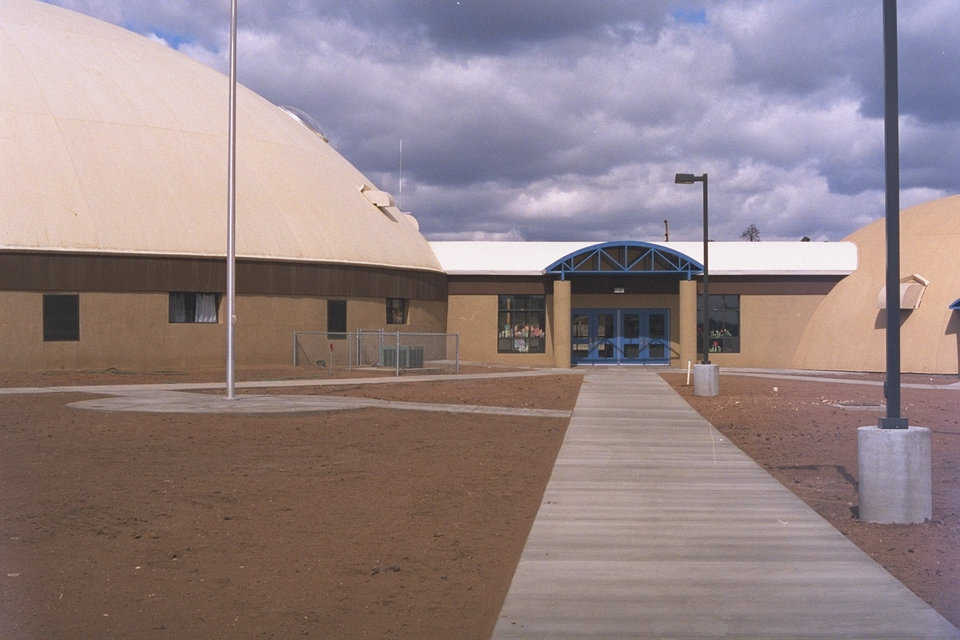
The Heber-Overgaard Unified School District in Arizona serves pre-kindergarten through grade 3 for 250 students.
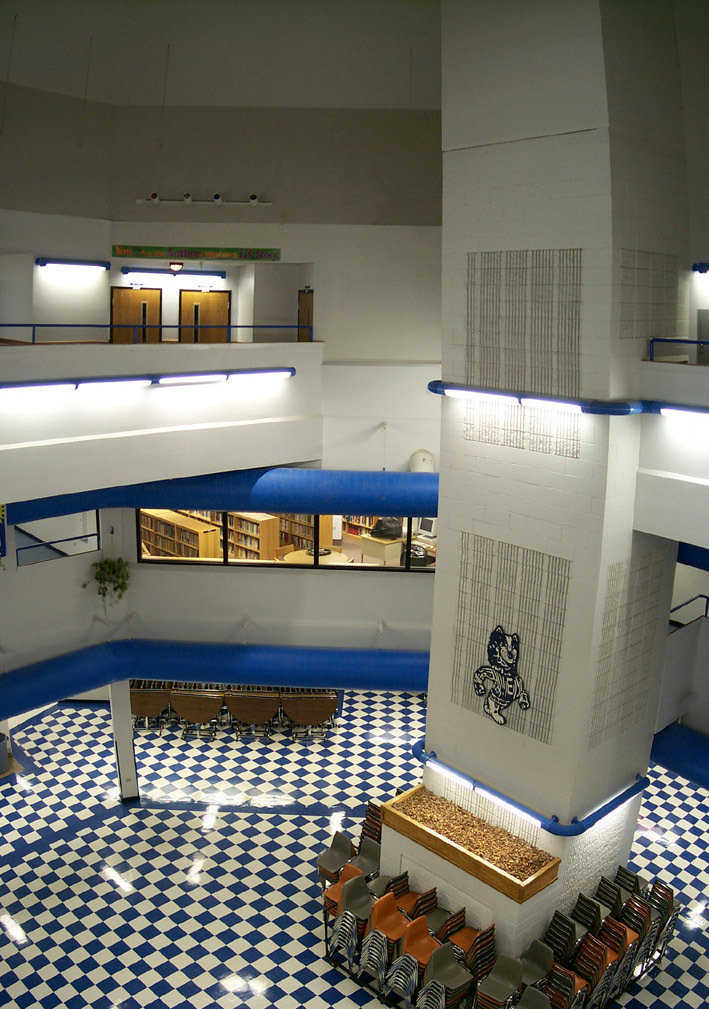
The American Red Cross has officially designated Emmett High School in Emmett, Idaho as the community disaster shelter, and it has been utilized as such during a threat of flooding.
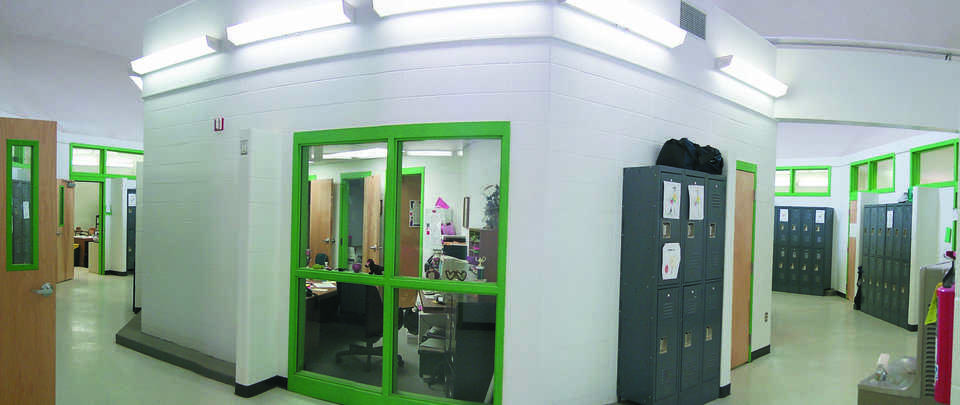
The five-dome Pattonsburg School in Pattonsburg, Missouri is designed so classrooms and lockers line the perimeter.
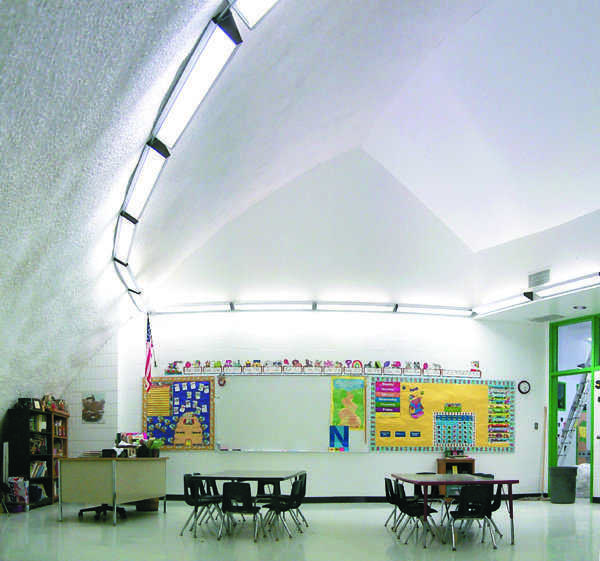
The kindergarten room’s spacious design offers a friendly learning enviroment.
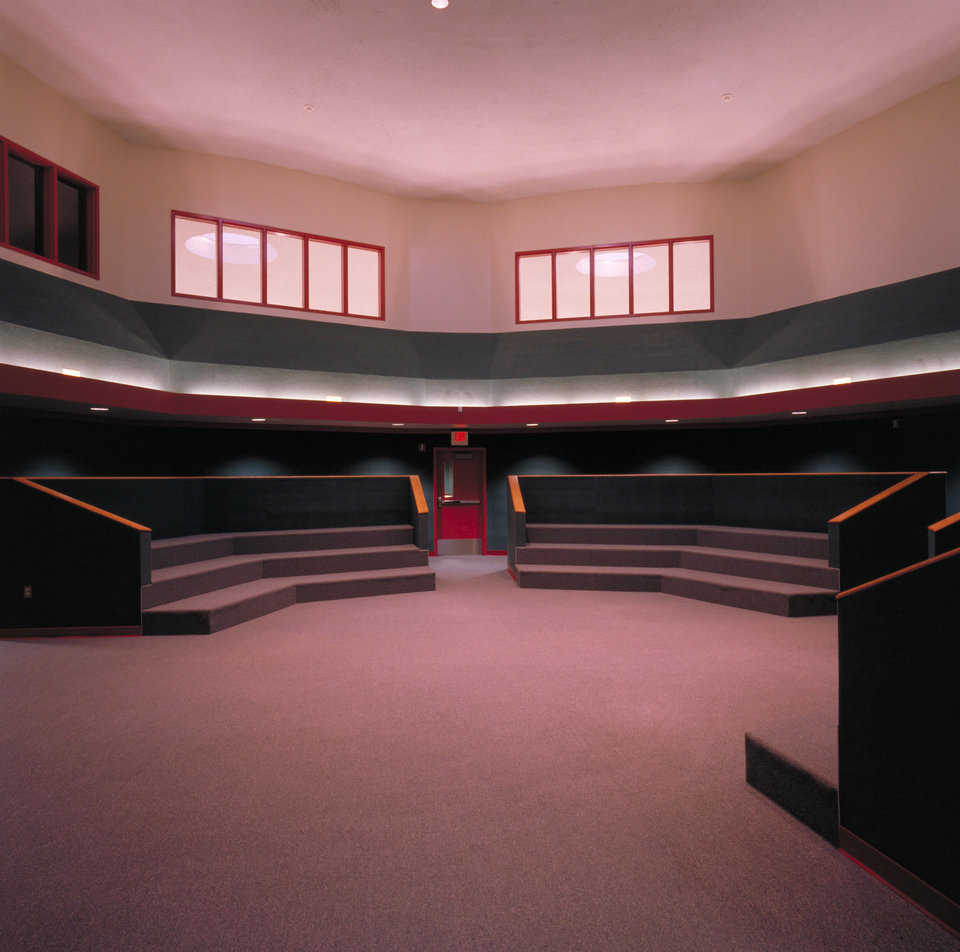
The media center is the center of the second dome. Both the media center and commons area are surrounded by classrooms. Natural light enters the center areas through eight-foot skylights and filters into classrooms through the above windows.
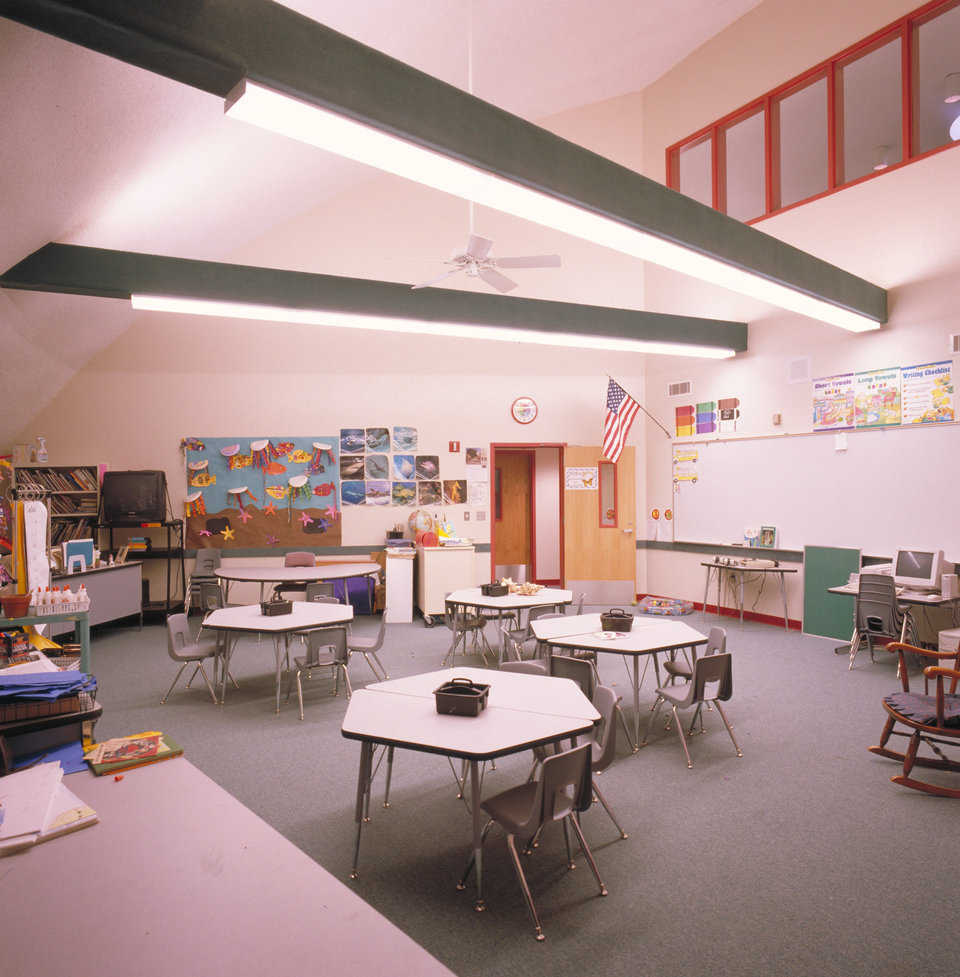
An elementary classroom.
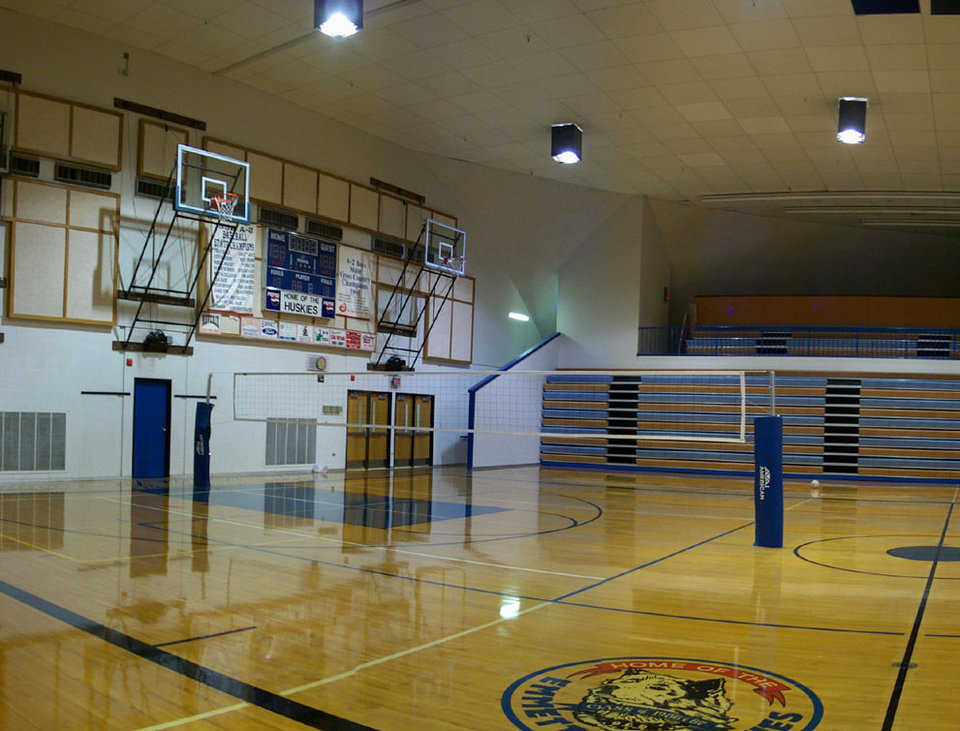
The 180-foot Emmett High School gymnasium in Emmett, Idaho. Its double-wide gym can seat 3,000. It also houses a weight room, a wrestling room, locker rooms, offices, concessions and a small theatre.
